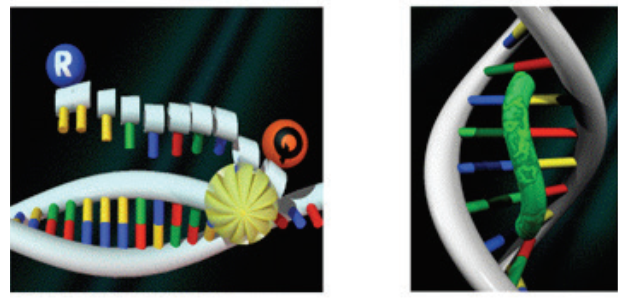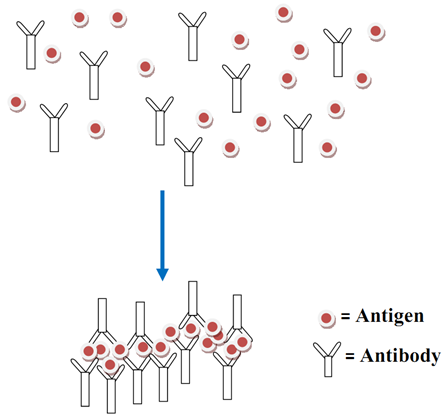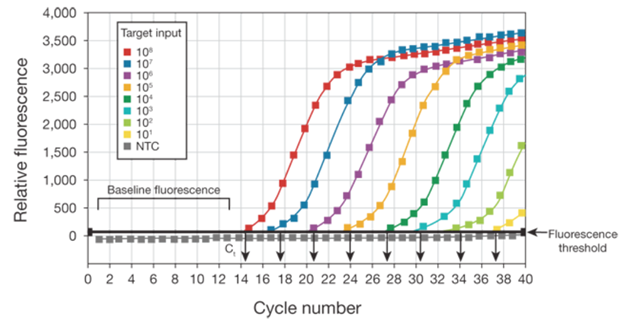The microscope has various parts that perform specific function; and it is important that scientists and students acquaint themselves of these components and their functions in order to make optimum use of the equipment (Figure 1).
An understanding of the different parts of the microscope is vital for the proper use of the apparatus in order to avoid its damage. The main parts of the microscope and their functions are as follows:
- Ocular lens: The ocular lens which can also be called the eye piece lens is used to enlarge the primary image produced by the objective lens.
- The fine adjustment knob: The coarse adjustment knob is used to obtain a fine and sharp image of a specimen after focusing with the coarse adjustment knob. It is used to bring the object on the stage into perfect focus.
- The coarse adjustment knob: The coarse adjustment knob is used to focus specimens on the mechanical stage, and it brings the specimen into general focus. It is first used to attain an approximate focus of the object prior to using the fine adjustment knob.
- The stage: The stage of a bright-field microscope is usually a mechanical one (i.e. it is movable and adjustable) and, it is helps to hold a slide in place for proper focusing while allowing movement to the left or right, and up or down.
- The objective lens: The objective lens which can also be called the nose piece lens helps to magnify the specimen to produce its real image first before sending it to the ocular lens.
- The nose piece: The nose piece helps to hold the objective lenses together.
- The diaphragm: The diaphragm is a lever-like device fitted into the diaphragm and, which is used to control the amount of light reaching the specimen on the stage and the entire lens system of the microscope.
- The base: The base supports the entire weight of the microscope. When carrying the microscope, one hand is placed underneath the base and while the other holds the arm (or limb).
- The condenser: The condenser is fitted directly under the stage and, it helps to collect and focus light rays from the illuminator upwards and onto the specimen or object on the stage. It is located between the light source and the stage.
- The illuminator: The illuminator is the source of lightto the microscope.
- Light control knob: It is used to adjust and control the intensity of the light source (i.e. the illuminator).
- Stage clip: The stage clip is used to hold glass slide in position so that they can be moved around during viewing.
- The arm (handle): This is the point where the microscope is held during its movement from one place to another. It can also be called the limb.
- Stage adjuster: Thestage adjuster is used to control the movement of the mechanical stage to and fro (i.e. side by side to the left or right position).

Microorganisms are too small to be seen by the naked eyes; and this is why the microscope is one of the most important tools in the field of microbiology because this piece of equipment makes it possible for microbiologist to observe the unseen microbial world made up of bacteria, fungi, algae viruses and protozoa. The microscope allows microbiologist to effectively describe the cellular morphology (i.e. the structure) of individual microbe.
REFERENCES
Beck R.W (2000). A chronology of microbiology in historical context. Washington, D.C.: ASM Press.
Cheesbrough, M (2006). District Laboratory Practice in Tropical countries Part I Cambridge
Chung K.T, Stevens Jr., S.E and Ferris D.H (1995). A chronology of events and pioneers of microbiology. SIM News, 45(1):3–13.
Dictionary of Microbiology and Molecular Biology, 3rd Edition. Paul Singleton and Diana Sainsbury. 2006, John Wiley & Sons Ltd. Canada.
Glick B.R and Pasternak J.J (2003). Molecular Biotechnology: Principles and Applications of Recombinant DNA. ASM Press, Washington DC, USA.
Goldman E and Green L.H (2008). Practical Handbook of Microbiology, Second Edition. CRC Press, Taylor and Francis Group, USA.
Madigan M.T., Martinko J.M., Dunlap P.V and Clark D.P (2009). Brock Biology of microorganisms. 12th edition. Pearson Benjamin Cummings Publishers. USA.
Nester E.W, Anderson D.G, Roberts C.E and Nester M.T (2009). Microbiology: A Human Perspective. Sixth edition. McGraw-Hill Companies, Inc, New York, USA.
Prescott L.M., Harley J.P and Klein D.A (2005). Microbiology. 6th ed. McGraw Hill Publishers, USA.
Willey J.M, Sherwood L.M and Woolverton C.J (2008). Harley and Klein’s Microbiology. 7th ed. McGraw-Hill Higher Education, USA.
Discover more from Microbiology Class
Subscribe to get the latest posts sent to your email.




